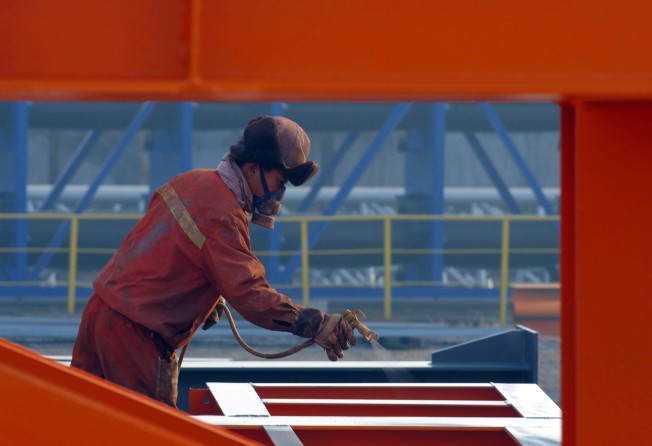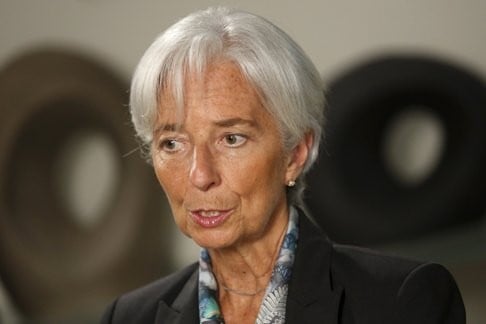
Global economic malaise made worse by growth slowdown in China
Ashoka Mody says the IMF should stop forecasting renewed growth and issue a warning that the global economy will remain vulnerable unless leaders act


For starters, world trade is growing at an anaemic annual rate of 2 per cent, compared to 8 per cent from 2003 to 2007. Whereas trade growth during those heady years far exceeded that of world GDP, which averaged 4.5 per cent, trade and GDP growth rates have lately been about the same. Even if GDP growth outstrips growth in trade this year, it is likely to amount to no more than 2.7 per cent.
The question is why. According to Christina and David Romer of the University of California, Berkeley, the aftershocks of modern financial crises – that is, since the second world war – fade after two to three years. The Harvard economists Carmen Reinhart and Kenneth Rogoff say that it takes five years for a country to dig itself out of a financial crisis. And, indeed, the financial dislocations of 2007-2008 have largely receded. So what accounts for the sluggish recovery?
The only logical explanation for this enduring lack of confidence is slow productivity growth
One popular explanation lies in the fuzzy notion of “secular stagnation”: long-term depressed demand for goods and services is undermining incentives to invest and hire. But demand would remain weak only if people lacked confidence in the future. The only logical explanation for this enduring lack of confidence, as Northwestern University’s Robert Gordon has documented and argued, is slow productivity growth.
Before the crisis, slow productivity growth was obscured by an illusory sense of prosperity in much of the world. In some countries – notably the US, Spain and Ireland – rising property prices, speculative construction and financial risk-taking were mutually reinforcing. At the same time, countries were amplifying one another’s growth through trade.
Central to the global boom was China, the rising giant that flooded the world with cheap exports, putting a lid on global inflation. Equally important, China imported a huge volume of commodities, thereby bolstering many African and Latin American economies, and purchased German cars and machines, enabling Europe’s largest economy to keep its regional supply chains humming.
This dynamic reversed around March 2008, when the US rescued its fifth-largest investment bank, Bear Stearns, from collapse. With the euro-zone banks also deeply implicated in the subprime mortgage mess and desperately short of US dollars, America and much of Europe began a remorseless slide into recession. Whereas in the boom years, world trade had spread the bounty, it was now spreading the malaise. As each country’s GDP growth slowed, so did its imports, causing its trading partners’ growth to slow as well.

These problems are now being compounded by the growth slowdown in China, the fulcrum of global trade. And the worst is yet to come. China’s huge industrial overcapacity and property glut needs to be wound down; the hubris driving its global acquisitions must be reined in; its corruption networks dismantled.
In short, the factors that dragged down the global economy in 2015 will persist – and even intensify. Emerging economies will remain weak. The euro zone will be constrained by listless global trade. Rising interest rates on corporate bonds portend slower growth in the US. China’s collapsing asset values could trigger financial turbulence. And policymakers are adrift, with little political leverage to stem these trends.
The IMF should stop forecasting renewed growth and issue a warning that the global economy will remain vulnerable unless leaders act to spur innovation and growth. Such an effort is long overdue.
Ashoka Mody, former mission chief for Germany and Ireland at the IMF, is a visiting professor of international economic policy at Princeton University. Copyright: Project Syndicate